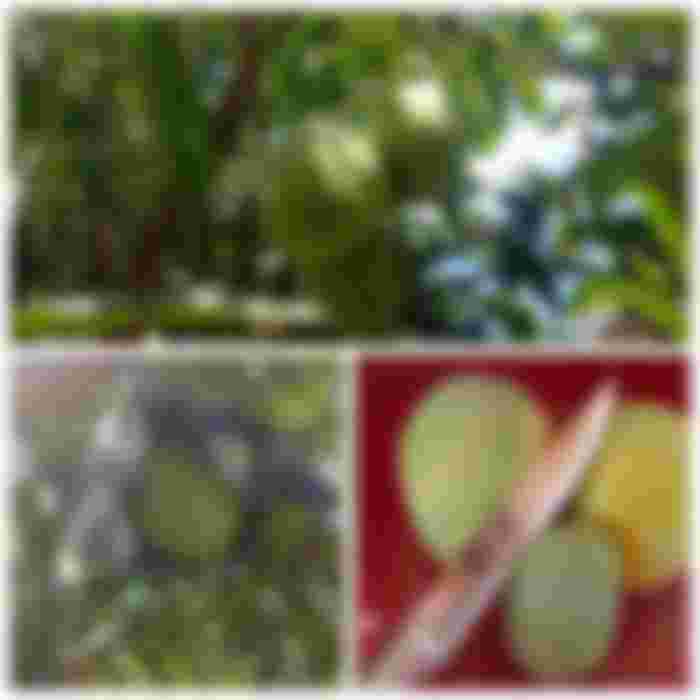Some local fruit in fruiting
I am very happy to know that in recent months there are many local fruits in my country which are in fruiting season. I could see the local fruit trees were bearing fruit in abundance. And this can increase income for fruit traders. Along the road that I passed, there were many houses that planted local fruit, and many of my neighbors also planted local fruit trees.
Many kinds of local fruit are grown in my country. Some are already bearing fruit, not yet bearing fruit because they are not in season yet and are bearing fruit.
The fruit season is the most anticipated of the seasonal fruit because they are not always there only a few months after that change with another fruit season. I would like to introduce to my readcash friends some local fruits that are now bearing fruit in my area and I will describe the benefits a little. Maybe some of the fruit you already recognize and there are 2 pieces that I always miss and look forward to the fruit.
1. Mango fruit

That's right, it's mango season right now. Where do I see mangoes at fruit sellers and in people's houses. My teacher colleagues at school often bring mangoes to school and several other local fruits that are also bearing fruit. This is a photo I took while visiting my teacher colleague's house to visit her sick husband. And I took the photo for a readcash friend. I do not name this type of mango and the fruit is very large. My fellow teacher has several mango trees in his house because it has a large and fertile yard which is very suitable for planting some local fruits in his house.
Based on information from Alodokter.com 1 mango contains the following nutrients:
1.5 – 2 grams of fiber15 grams of carbohydrates1 – 1.5 grams of protein55 – 60 micrograms of vitamin A35-60 mg of vitamin C9 mg of vitamin E40 – 45 micrograms of folate10 – 15 mg calcium10 – 15 mg magnesium200 mg potassium14 – 20 mg phosphorus
Not only the nutritional content above, mangoes are also enriched with B vitamins, vitamin K, lycopene, and water. I really like mangoes. Do readcash friends like mangoes?
So, the vitamins, minerals and antioxidants in mangoes can provide important health benefits. For example, vitamin K can help blood clot effectively and help prevent anemia (Halo.doc). Not only tastes good, mangoes have health-supporting benefits.
2. Rambutan fruit

Who knows this local fruit. Fruit that is oval in shape, 4-5 cm long, with bent spines, limp to stiff. The skin of the fruit is green and becomes yellow or red when it is ripe. Thick fruit walls. This fruit contains a lot of water tastes sweet and sour too. I really love rambutan and rambutan season is what I'm most looking forward to. When I see a rambutan tree that is bearing fruit, I am always amazed and happy.
A few days ago a fellow teacher at school brought rambutan and it was immediately picked from the tree, it was proven that there were still a lot of ants. Incidentally he planted a rambutan tree. Surely you can imagine how enthusiastic I was to see this fruit. Do readcash friends like rambutan fruit.
What is the name of this fruit in your place?
from various nutritional content in it. This red sweet fruit is also low in calories, in 100 grams (g) of rambutan there are the following nutrients :
Protein: 0.9 gCarbs: 18 gFiber: 0.8-1 gCalcium: 15 milligrams (mg)Phosphorus: 15 mgIron: 0.5 mgSodium: 15 mgPotassium: 110 mgVitamin C: 60 mg (tokopedia.com)
From the nutritional content contained in rambutan, of course this fruit has benefits including :
Maintain the immune system
Improve digestive health
Nourish the skin
And there are many other benefits.
But don't consume it too much. And, for people with diabetes and hypertension should avoid consuming this fruit. And that needs to be remembered eating rambutan fruit that is too ripe can be dangerous, increasing cholesterol levels and blood pressure. Because the sugar contained in rambutan fruit can turn into alcohol when the fruit is too ripe. The effect will be an increase in cholesterol and hypertension.
3. Water guava fruit ( special guava for salad )

There are many types of guava fruit and guava I mean red guava which is usually used as a salad or salad mixed with other fruits such as mango, pineapple, cucumber etc. With a special peanut sauce with fruit salad. Currently, this type of guava is bearing many fruits.
Reported from various sources, guava is rich in nutrients, including vitamin A, vitamin C, vitamin E, fiber, potassium, myricetin, hexahydroxyflavone, phenolic, flavonoids, and others. These substances have their respective roles, ranging from antioxidants, antimicrobials, to anticancer, and so on. The content of vitamin C in guava is believed to increase immunity and the formation of collagen to keep the skin looking young.
In addition, water guava contains high flavonoid compounds that are active antioxidants. This content is efficacious to prevent or treat inflammation (inflammation).
4. Sapodilla fruit

In Indonesian we call it SAWO fruit. Sawo is a tropical fruit that has the Latin name Manilkara zapota. Other names for sapodilla are sapodilla, sapota, and naseberry. This fruit is widely grown in the countries of Central America, Mexico, and the Caribbean. However, now it has been widely cultivated in almost all over the world, including Indonesia. Reported from some information sapodilla fruit many types and sizes. in the picture I took is a type of brown manila and this picture I took in my school yard. And it happened that there were ripe ones and I picked them. It tastes sweet, juicy and fibrous.
Manila sapodilla fruit has a sweet, it's so sweet like a date and soft flesh texture. However, unripe manila sapodilla has a bitter taste due to its high tannin content.
Reported from alo.doc Sawo is a fruit that contains quite high calories. Per 100 grams of sapodilla can contain 83 calories. Launching from Netmeds, here are the nutritional values per 100 grams of sapodilla fruit :
Energy: 83 kilocalories.Protein: 0.44 grams.Total Fat: 1.10 grams.Carbs: 19.9 grams.Dietary Fiber: 10.9 grams.Folate: 14 micrograms.Niacin: 0.2 milligrams.Pantothenic acid: 0.252 milligrams.Pyridoxine: 0.037 milligrams.Riboflavin: 0.020 milligrams.Thiamine: 0.058 milligrams.Vitamin A: 60IU.Vitamin C: 14.7 milligrams.Sodium: 12 milligrams.Potassium: 193 milligrams.Calcium: 21 milligrams.Copper: 0.086 milligrams.Iron: 0.80 milligrams.Magnesium: 12 milligrams.Phosphorus: 12 milligrams.Selenium: 0.6 micrograms.Zinc: 0.10 milligrams.
Some of the benefits of consuming sapodilla fruit :
Overcoming constipation.
Prevents inflammation.
Control blood sugar.
Reduce the risk of cancer.
Strengthens bones.
Protects from infectious diseases.
In addition to having benefits, eating sapodilla fruit also has side effects if you eat too much, which can cause itching and inflammation of the throat. In addition, it can also cause irritation. This is because sapodilla contains tannins in it. So, don't eat too much and this fruit is also my favorite fruit.
Here's some local fruit information in my area that is currently in season. Is there this local fruit in your area? Is the local fruit famous in your area? I hope this information is helpful.






In my country, mango season has gone. I wish i could enjoy mango throughout the year. 🥺